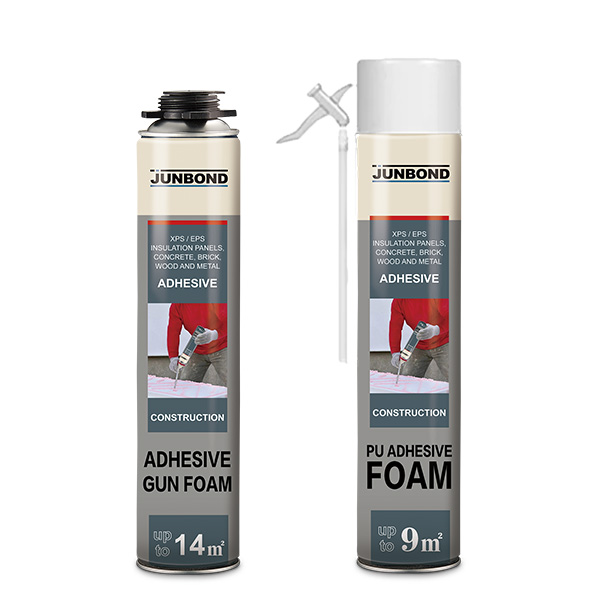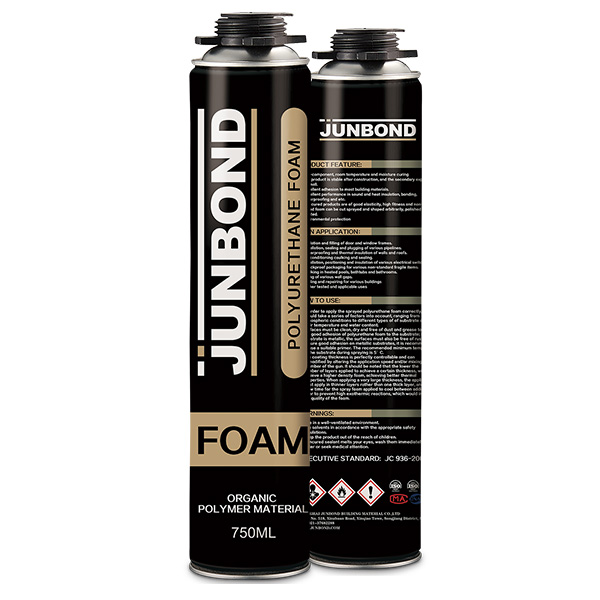Using PU Foam in Construction
Polyurethane (PU) foam is a versatile and highly effective material widely used in the construction industry. It is a type of foam created by reacting a polyol (a compound with multiple alcohol groups) with an isocyanate (a compound with reactive nitrogen atoms). This reaction results in a foam structure that can be flexible or rigid, making it adaptable for a wide range of applications. PU foam is typically used for insulation, sealing, and soundproofing, providing solutions to various construction challenges.
Despite its widespread use, many may not realize the vast array of benefits that PU foam offers, making it an indispensable material in modern construction projects.


Why PU Foam is widely Used in the Construction Industry
The growing demand for energy-efficient and sustainable building practices has driven the rise in popularity of PU foam. Its superior thermal insulation properties, ease of application, and effectiveness in reducing energy costs have made it a preferred choice for builders, contractors, and architects alike. Additionally, the material's ability to expand and conform to surfaces ensures airtight seals, reducing drafts and improving overall building performance. As energy conservation becomes an ever-growing priority in the construction industry, PU foam continues to evolve as a key solution.
Types of Polyurethane Foam Used in Construction
Spray Foam Insulation
Spray foam insulation is one of the most popular applications of PU foam in construction. It is typically sprayed as a liquid that expands rapidly to form a solid foam layer. Spray foam provides an exceptional barrier to air, moisture, and heat, making it ideal for insulating walls, attics, and roofs. The foam adheres to most surfaces, filling gaps and cracks that traditional insulation materials cannot reach. Its high R-value (a measure of thermal resistance) makes it an efficient material for energy conservation.
Spray foam is used not only for insulation but also for its ability to strengthen structures by providing additional support. The foam hardens to form a solid layer that enhances the building's resistance to air infiltration, making homes and commercial buildings more energy-efficient.
Rigid PU Foam Panels
Rigid polyurethane foam panels are commonly used in applications where higher structural strength and thermal insulation are required. These foam panels are pre-formed into rigid sheets or boards and are ideal for insulating exterior walls, roofs, and floors. Their solid structure makes them resistant to compression and ideal for use in environments where heavy loads are present, such as in cold storage buildings, refrigeration units, and industrial applications.
Rigid PU foam panels are highly resistant to moisture and provide excellent thermal insulation. Their durability and ability to withstand temperature extremes make them a go-to choice for many construction projects that demand long-lasting insulation solutions.
PU Foam Sealants
Polyurethane foam sealants are designed to seal gaps, cracks, and joints in buildings, preventing air, water, and dust infiltration. These sealants are commonly used around windows, doors, and other areas where traditional sealants may fail. PU foam sealants are available in spray cans or as part of professional-grade systems, and they expand upon application to fill gaps and harden into a solid foam.
In addition to their insulating properties, PU foam sealants help reduce noise transmission and provide fire resistance. They also offer excellent adhesion to a wide variety of surfaces, such as wood, metal, concrete, and brick, ensuring an airtight and waterproof seal.
Advantages of PU Foam in Construction
Thermal Insulation and Energy Efficiency
One of the most significant advantages of construction PU foam is its exceptional thermal insulation properties. The foam’s closed-cell structure traps air, preventing heat from escaping or entering the building. This means that buildings insulated with PU foam experience fewer temperature fluctuations, resulting in less reliance on heating and cooling systems. Over time, this translates into significant energy savings for homeowners and businesses, reducing both utility bills and the building's carbon footprint.
Whether used in walls, roofs, or floors, PU foam delivers superior insulation, offering higher R-values per inch compared to traditional materials like fiberglass or cellulose. This makes it an effective solution for projects aiming to meet energy-efficient building standards or achieve certifications such as LEED.
Soundproofing and Noise Reduction
PU foam also offers remarkable soundproofing capabilities, making it an ideal material for sound insulation in buildings. The foam’s ability to absorb and block sound waves helps reduce noise pollution, which is particularly beneficial in urban environments or in structures where noise control is crucial, such as offices, theaters, or music studios.
By applying PU foam to walls, floors, ceilings, or even as part of a composite building material, the foam acts as a barrier to airborne sound and vibrations. This makes it a practical solution for enhancing acoustical comfort in residential, commercial, and industrial buildings.
Durability and Longevity
Polyurethane foam is known for its durability and long lifespan. The material resists degradation from factors such as moisture, mold, and mildew, which are common issues for traditional insulation materials. As a result, PU foam maintains its performance for many years, ensuring consistent energy efficiency and structural integrity over time.
The closed-cell structure of rigid PU foam is particularly resistant to water absorption, preventing issues like rotting or weakening of the foam. This durability ensures that buildings insulated with PU foam will maintain their performance over extended periods, making it a long-term investment in building quality.
Applications of PU Foam in Construction
Insulation for Walls, Roofs, and Floors
The most common application of PU foam in construction is insulation. Spray foam, rigid panels, and even boardstock PU foam are widely used to insulate walls, roofs, and floors. The high thermal resistance of PU foam helps to keep indoor temperatures stable, reducing the energy required for heating and cooling systems.
For example, spray foam can be applied to attic spaces and beneath roofs to seal gaps, preventing heat loss and moisture infiltration. Rigid foam boards are often used to insulate exterior walls and foundations, while foam sealants are applied around windows and doors to ensure airtight sealing. Each of these applications improves the overall energy performance of the building, contributing to cost savings and environmental sustainability.
Sealing Gaps and Cracks
In addition to its insulating properties, PU foam serves as an excellent sealing agent for gaps and cracks that can compromise the energy efficiency of a building. This includes gaps around windows, doors, vents, and electrical outlets. When applied, PU foam expands to fill the voids, hardening into a solid structure that seals out air, moisture, and pests.
This ability to form a seamless, airtight barrier significantly reduces drafts, enhancing comfort and indoor air quality. Sealing gaps with PU foam can also improve the effectiveness of HVAC systems, reducing the need for constant temperature adjustments.
Waterproofing and Moisture Control
PU foam plays a critical role in waterproofing and moisture control, especially in areas exposed to high humidity or water exposure. Rigid PU foam panels are commonly used in basements, foundations, and exterior walls to prevent water penetration and mitigate the risks of mold and mildew growth. Additionally, spray foam can be applied in areas prone to leaks, such as around pipes, windows, and roof penetrations.
The foam’s closed-cell structure creates a robust moisture barrier, ensuring that buildings remain dry and structurally sound in even the most challenging environmental conditions.
Environmental Impact and Sustainability Considerations
Environmental Challenges of PU Foam
Despite its many benefits, PU foam is not without its environmental concerns. Traditional polyurethane foam is derived from petrochemical resources, and its production can have a significant carbon footprint. Moreover, some types of PU foam can release harmful gases, such as volatile organic compounds (VOCs), during manufacturing or installation.
Additionally, PU foam is not biodegradable, and its disposal can lead to long-term environmental impact if not handled properly. This raises concerns about the material’s overall sustainability, especially in light of growing efforts to reduce waste and carbon emissions in the construction industry.
Innovations in Sustainable PU Foam Products
In response to these challenges, there have been significant strides in the development of more sustainable PU foam products. Manufacturers are exploring the use of renewable bio-based polyols derived from plants like soybeans and castor oil. These bio-based PU foams have a lower environmental impact and help reduce dependence on fossil fuels.
Additionally, new formulations of PU foam with lower levels of VOC emissions are now available, improving air quality during installation. As the construction industry continues to push for more sustainable practices, these innovations are expected to drive further improvements in the environmental footprint of PU foam.
Conclusion
The Future of PU Foam in the Construction Industry
As demand for energy-efficient and environmentally conscious construction grows, the role of PU foam in the industry is set to expand. Innovations in material science, sustainability, and energy efficiency are driving the development of new, more eco-friendly foam solutions. As these advances continue, PU foam is likely to remain a critical material in the construction of energy-efficient, durable, and sustainable buildings.
Final Thoughts on PU Foam’s Role in Modern Construction
PU foam's exceptional versatility and performance in insulation, sealing, soundproofing, and moisture control have firmly established it as a key material
in modern construction. While environmental considerations remain, the ongoing development of greener alternatives ensures that PU foam will continue to contribute to the creation of more energy-efficient, sustainable structures in the future.
Post time: Feb-28-2025
